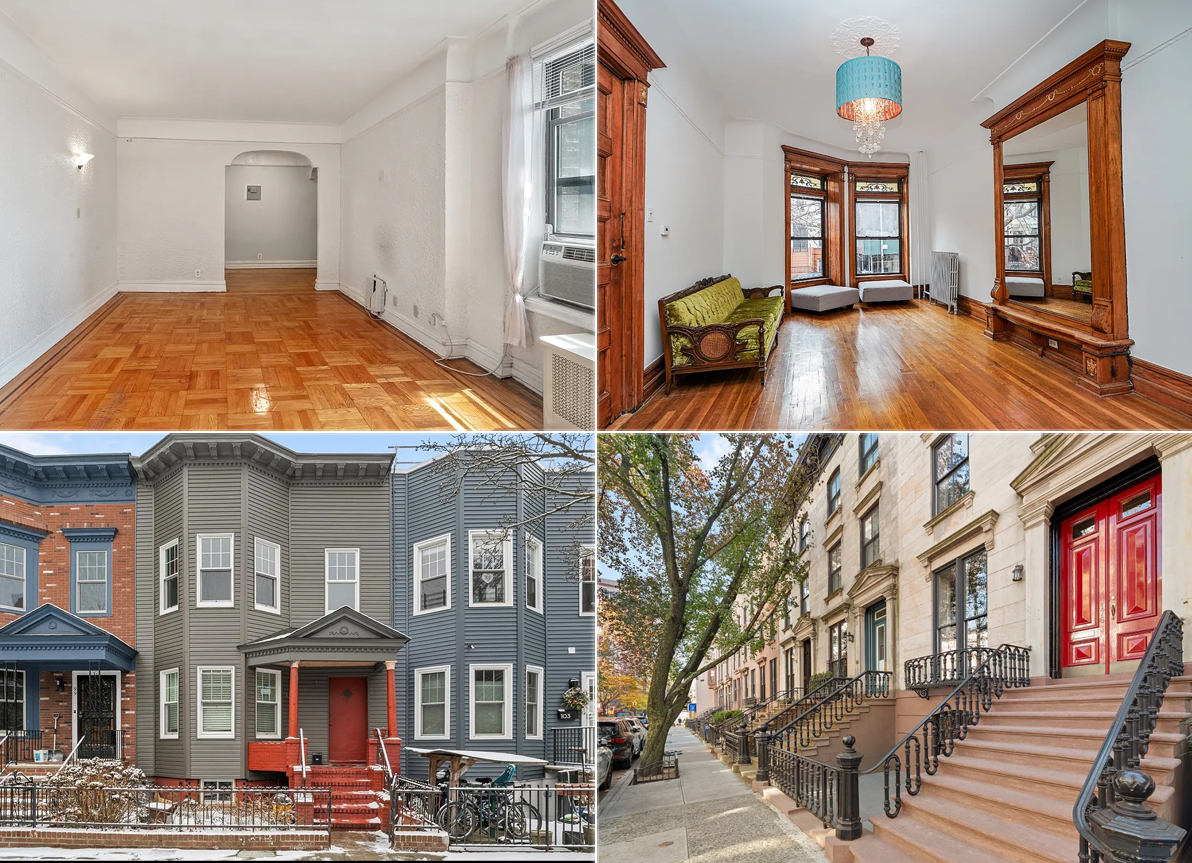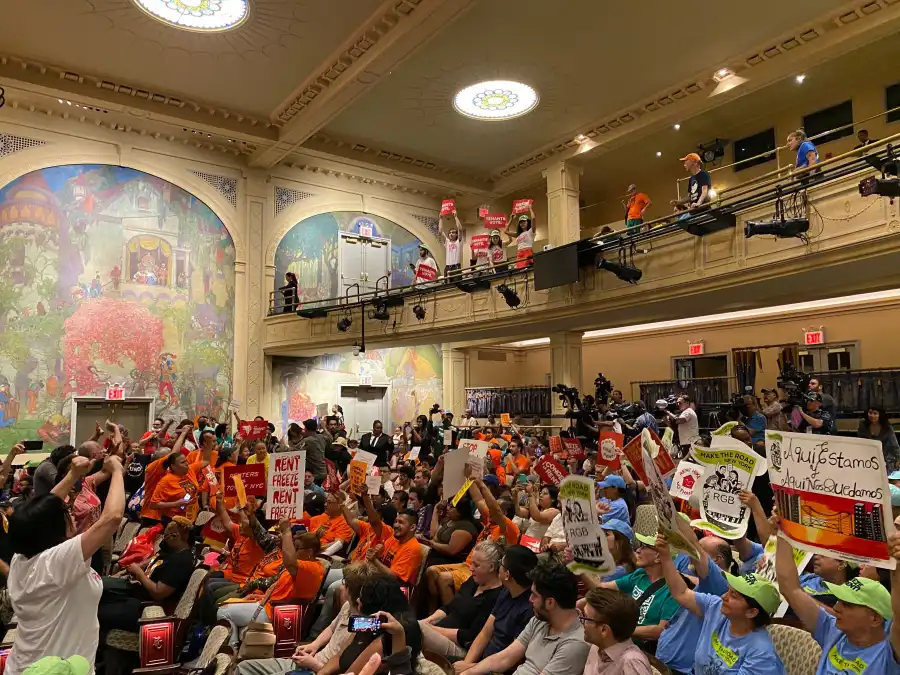AY Financial Projections: We Got 'Em
Well, it looks like the ESDC has in fact coughed up the financial projections for the Atlantic Yards project. We haven’t had time to go through them too closely, but at first glance they do not paint as profitable a picture as many opponents suspect, generating a mediocre IRR of 9.6 percent. The biggest thing…


Well, it looks like the ESDC has in fact coughed up the financial projections for the Atlantic Yards project. We haven’t had time to go through them too closely, but at first glance they do not paint as profitable a picture as many opponents suspect, generating a mediocre IRR of 9.6 percent. The biggest thing that jumps out at us is that they show that FRC is planning to sell off most of the pieces of the project in 2015. Either that, or they just needed to estimate a terminal value and that seemed as good a year as any. We’re sure others far more qualified to analyze this stuff will be able to offer more insightful analysis. We’ve provided links to the three documents below. Have fun.
1) AY Cash Flows Returns
2) Combined IRR
3) Nets Arena Cash Flows
Earlier coverage and discussion:
ESDC Forced to Cough Up Financial Docs on AY [Brownstoner]
And Norman Oder’s response…
ESDC-released Documents Lack Vital Information [AY Report]
Photo by threecee





David, I know what it takes to finance development, and I know how much money FCR is being given by the City and State. Maybe you can’t do simple arithmetic, but I can.
Every site needs foundation work and infrastructure before development can happen. A developer I know built a large development in Hells Kitchen over railroad tracks, and he didn’t require a dollar from the city to cover his infrastructure costs. The gifts from the City, State and MTA that FCR has been able to get to finance their private for-profit development is pretty astounding.
You seem to forget that you brought Broken Angel into this argument when you were trying to bait me into saying something about 421a abatements as part of your argument.
“Again I must ask are you going to be getting 421a tax abatements at your Broken Angel project??
Posted by: David at February 28, 2007 5:21 PM”
You keep comparing Broken Angel to AY because it is a much smaller development, but by continually doing so, you undermine your own arguement. Sure AY is a big site, but if evey piece of that property (including those taken by ED) were developed organically without huge gifts of cash from the city, they would produce far more of a tax benefit than AY ever will.
Actually I do get it Shahn – I get that you (or I) have no f’ing idea how much cash Ratner is investing-which is why your comments, suppositions and conclusions are just silly.
I also get that 421-a and J51 spur development (sorry but ‘organic’ is such a B.S. term that I can’t bring myself to use it) but those programs are just not going to be enough to ‘spur’ development of a site that needs hundreds of millions of dollars of infrastructure just to get started. You are trying to compare your development of some nutter’s 9 family art project to a project that (even if it was 1/4 the size) requires engineering and infrastructure expertise beyond virtually 99% of the developers out there. Which is exactly the reason the project cant be open to ‘anyone’; the amount of $ that could be lost by the MTA,City & State if a developer gets in over his head is staggering. Just look at the simple development of the Brooklyn Bridge Park Warehouses that Boylemegreen was suppossed to do – he is stretched so far beyond his capabilites and capacity that the State is now pulling it back – costing everyone time and money.
Shahn I know you are proud of yourself (and the publicity you are getting) for Broken Angel but trying to compare your level of development to what is going on at AY is like thinking you know something about landing a man on the moon because you once flew a kite. – no offense.
You don’t get it David. There is no 500m cash investment from FCR. They are getting 300m that counts as equity towards their loans. I keep saying it and you keep ignoring it.
421a and J51 abatements are one way the city has helped spur organic development. The difference is that those programs are open to anyone who wants to apply for them. They aren’t handed out exclusively to political cronies of the mayor and governor. That’s also why they produce a real return on the cities investment in the way of tax increases. That can’t be said of the AY project because it produces such a small net tax benefit.
Shahn – I cant interpret those financials any better then anyone else but all I am saying is that in your 1st post you belittle a $500M CASH investment and then when I say that 500M is significant you then say it actually isnt a cash investment it is loans and subsidies (A claim for which you or I have any basis)
As for all that “organic development”, 421(a) or J-51 doesnt sound all that organic to me and either way those projects dont require a $200million dollar railyard platform to be built prior to putting a shovel in the ground. NYC has
SP’er – YES I am saying that these extremely high quality tenants would NOT have moved to Brooklyn if not for Metrotech – proof – well how about that virtually no class A office space has been built outside of Metrotech since, and despite the city pushing and pushing similar companies appear to have little interest in moving to Brooklyn along the rezoned Flatbush Ave corrider.
Recent surveys show that approx 30% of Metrotech employees are Brooklyn residents. Further it is very nice of people to say now in the years of the $1000 sqft Brooklyn apartment that development would have happened anyway – but projects such as Metrotech were instrumental in raising the boro’s profile amongst the people that make decsions in terms of lending and investment. Not to mention the word of mouth of the tens of thousands of workers who otherwise never would have come to Brooklyn in the 1st place. Metrotech is an unqualified success and anyone who says otherwise doesnt know sh!t about economic development or real estate. Would it be great NOW if it wasnt setup as an isolated campus – sure – but when it was concieved that was a non-starter, do you remember what Brooklyn was like in the 80’s????
Organic development = individual initiative.
It also means that many small developers do many small projects and the quality of life in a neighborhood goes up. Duh.
Organic development? I love that term. Displace poor people with sushi restaurants and wine bars rather than McDonald’s and Dunkin Donuts. Gee, thanks.
Ratner is not responsible for solving the high unemployment rate of the area. Only individual initiative, more schooling, staying out of jail, and having children at older ages will accomplish that.
Maybe you don’t know this because you aren’t a developer David, but the equity required for a bank to reach a comfortable loan to value on a loan can come from a number of different sources. The 300m and counting from the City, State and MTA will absolutely be counted as equity towards those loans, making the real ROI for FCR much higher than the numbers shown on that sheet. Also, IRR is not ROI, there are a lot of details missing from their IRR caluclations that they obviously don’t want to show or they would.
You have proven my point for me David. There are many development being built in Brooklyn right now that utilize the 421a program. It is this organic development that is increasing the city’s tax rolls without eminent domain or hundreds of millions in direct funding from the City, State and MTA with little benefit to show for it.
A fire emptied Broken Angel of its former inhabitants in 1975 and it was never fully repaired.
Anon at 1:27am writes:
“Urban planning experts believe that an arena in Coney Island with even a higher percentage of affordable housing would provide too low of an economic incentive for a developer and thus require much more subsidies from the government to get the deal done. So let me understand this. There’s a problem with the use of public subsidies in PH/FG but not in Coney Island? Smells like bullshit to me….. ”
You completely miss the point. It’s not a matter of the use of public subsidy. It’s the lack of transparency as to the return on that investment. Is the public getting a good deal on those “affordable” units or not? Or could we get a better deal (ie more affordable units at a lower cost) if we simply upzoned the area, offered affordable housing incentives, and then let market forces take over — ie, competitive bidding, which never happened.